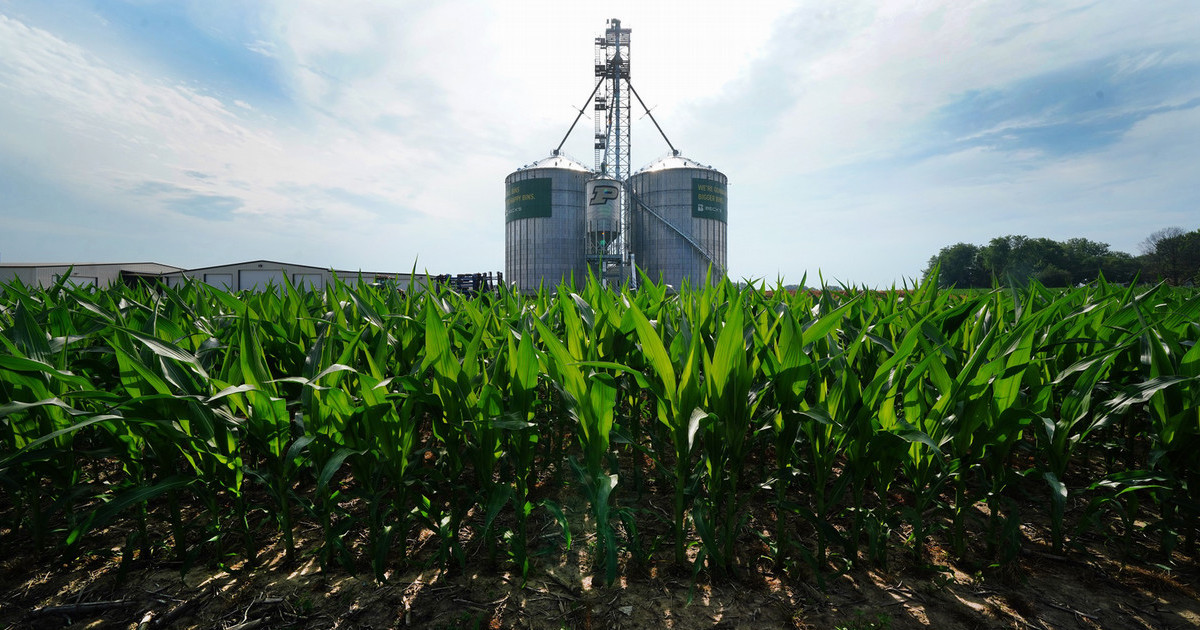Gather Information

~by Heather Strohm
Regional Extension Educator, Community Development – Purdue University
Knock! Knock! The wrapping of knuckles on the large, dark door frame bellows down the corridor of the distillery. The distillery marks the history of what founded the town more than one hundred years ago. Grandparents were secretaries, bookkeepers, and the daily laborers that made up the factory floors. During prohibition, this distillery, and several others kept liquor businesses alive and flowing through the secret caverns of Indiana and the Juke Joints of the Midwest. This distillery is one of the largest in the nation.
Today, ownership has swapped hands a few times. Stories like this are common in our nation’s towns. For the distillery and many other businesses, the questions that ripple through the community are what does the distillery plan do as times move forward? What are their long-term goals? What kind of vision does it have for the town? The county? Staffing? How involved does the current leadership plan or want to be in the community? With schools? With workforce? With the quality of life? What challenges does the distillery currently experience? How much support have they had from the local level? State level? What kind of resources and relationships do they currently have to help them navigate through the perils of the challenges ahead of them, and which ones do they still need? All of these are very valid and very important questions.
During Module Two of Purdue Extension’s Business Retention and Expansion (BR&E) program, are the value of BR&E to the economic development and community development process is discussed and the Community Capitals highlighted, including:
- Built capital: infrastructure: telecommunications, industrial parks, bridges, etc.
- Cultural capital: Festivals, multi-lingual populations, traditions, and influences in that area.
- Financial capital: Access to financial resources available to invest in community capacity building
- Human capital: Skills and abilities of residents and the capacity to access outside resources and knowledge.
- Natural capital: A community’s environment, etc.
- Political capital: Ability to influence regulations, etc.
- Social capital: Connections among people and organizations
Module Three operationalizes the knowledge gained in Module Two through the use of Site Visits and Questionnaires. By this time in the program, the Task Force has intentionally focused on a key strategy for the BR&E program. Based off o the selected strategy, the Task Force identifies key questions for the targeted companies. The Task Force may opt for a multi-pronged approach with surveys and a mailing or customize the process based on other community dynamics. The survey’s purpose is to isolate any high-priority business emergency response scenarios as well as to develop an economic development business retention strategy for the program guided by the research’s output.
Questions are guided through a database, and Task Force members are encouraged and able to provide customized adjustments based on the personality of their community and their needs analysis. If a community is focusing on healthcare or Main Street, the proposed strategy and questions would reflect the intentionality of the focus.
Sample Survey Questions:
- What plans do you have to modernize, renovate, or expand your present building(s) or equipment
- What impact would your plans for modernization, renovation, expansion, moving, closing, or selling have on the number of employees in your COMMUNITY location?
- What is one need your company requires to expand?
- What is a barrier that impacts your company most outside of workforce and housing?
- How many employees work at your COMMUNITY business location?
After completion of the question selection and strategy identification phase, the Task Force aligns teams and conducts the Site Visits. Each site visit is conducted virtually or in person by two or three Task Force members. The visits are 1 – 2 hours in duration and involve the core leadership of the business being visited. Consider who needs to be in the kitchen when a recipe is being made? Or when you design a freshly baked cake. Who makes the decisions on the ingredients? The chefs, correct? The restaurant owners. Those are the same individuals you want in the site visit meetings. The CEOs. the Presidents. The Human Resource Directors. The essential decision makers for the companies should attend the site visit meetings. The hard and uncomfortable questions will be asked, and those key individuals can answer them and reveal the most vulnerable parts of the company.
Where does the company need the most help, and adversely the community, government, and ecosystem can help the most? Those are the hardest echoes to hear of all? The data and information collected from the site visits and surveys are gathered into a central survey instrument maintained through Purdue University and in collaboration with the Task Force Coordinator. The survey instrument begins to segment trends and identify any emerging response issues not mentioned in the site visit interviews.
As a community begins to consider a definitive compilation of site visits, remember there is no perfect set of numbers for a site visit. Each community is guided by the capacity to complete the number of company visits they select early on to target and complete. It is truly based on the ability of the Task Force to pull together and work as a team. One community or town may complete eight site visits, identify the need for more CDL certification drivers for their agribusiness sector, and partner with Ivy Tech Community College to initiate discussions. In comparison, another community may complete upwards of 50 site visits and collaborate with other regional and countywide stakeholders to develop an occupational health clinic. Each has its own success story produced from the fruit of the Task Force’s labor. Once they are completed, the real work of addressing needs and leveraging opportunities begins.


